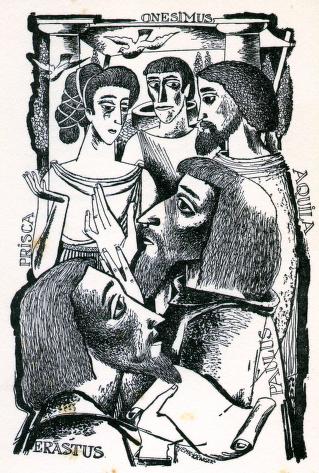Artists

Krijger, Henk - by H.R. Rookmaaker
Graphic work of Henk Krijger
by H.R. Rookmaaker

Henk Krijger: Paul in Ephesus
Throughout the ages artists have represented reality in their own
way; they (and this includes the so-called naturalists) have always had a
specific vision of reality. Seldom – or perhaps never – does one
encounter an exact representation of reality that also has compositional
beauty; the artist always changes and transforms nature so that the result
is an aesthetically responsible whole – a whole which, as such, was not
exactly present in reality. Also Henk Krijger, whose work bears his very
unique stamp, ‘deforms’ reality, specifically placing the images in a way
that shows their mutual connectedness, a way that is obedient to
aesthetic laws. He never loses the sense that visual art must represent
reality; therefore he never sacrifices the recognizability and understandability
of the images he is portraying.
Very occasionally in Krijger’s work one could say that what he depicts
cannot be found like this in reality, but in those cases the entire work
possesses such a compositional and visionary strength, and is so
artistically convincing, that the question of the ‘realisticness’ doesn’t
even occur to us. In his work Krijger places great emphasis on the
decorative element – and therein lies his strength. For that reason, too,
his art is so well suited as book illustrations, and so on. Among the works
displayed here are the pen-drawn designs for the illuminations of H. de
Bruin’s Paul in Ephesus and A. Coolen’s Fairytales for grown-ups – but we
will not describe these in more detail here. We are constantly struck by
the exceptionally convincing, extremely personal stylizing of reality,
from which Krijger’s compositions derive their decorative and expressive
effect. This work, though not untouched by contemporary artistic
influences (but then, which art would claim that?), nevertheless takes its
own honourable place in the ranks of contemporary art.
Originally published in Dutch in Trouw, no date (between 1949 and 1956).
Published in English in M. Hengelaar-Rookmaaker (ed.): H.R. Rookmaaker:
The Complete Works 1, Piquant – Carlisle, 2003. Also obtainable as a CD-Rom.






